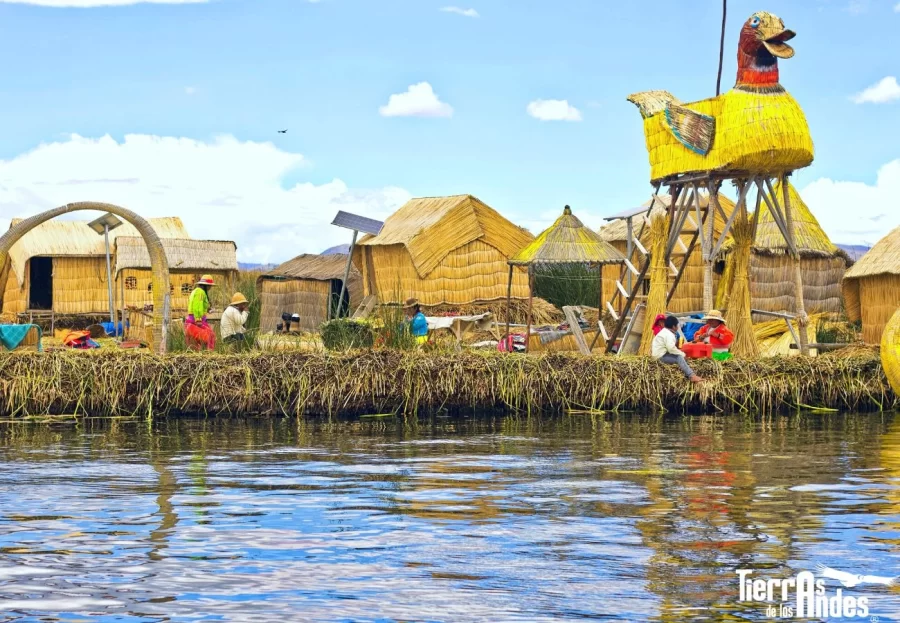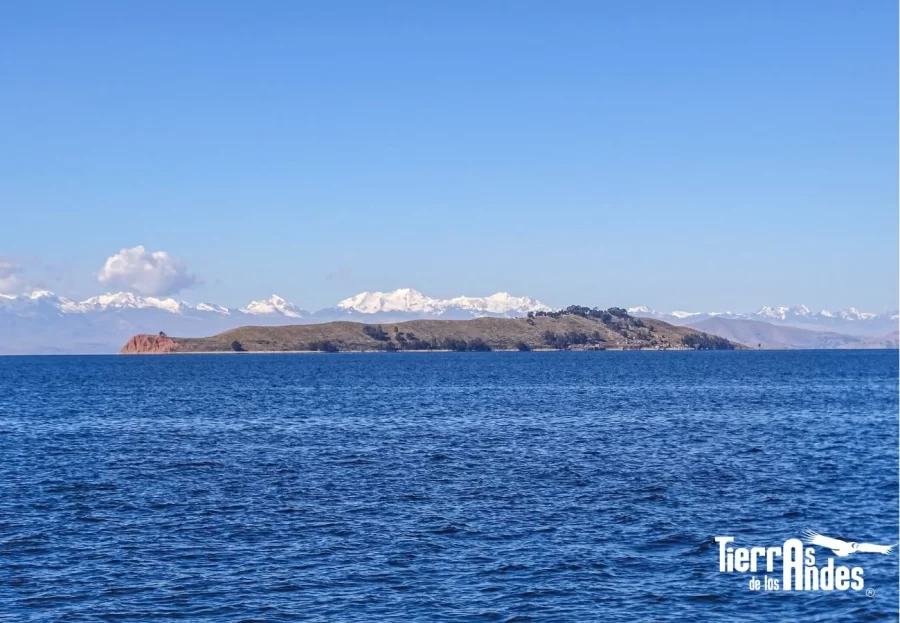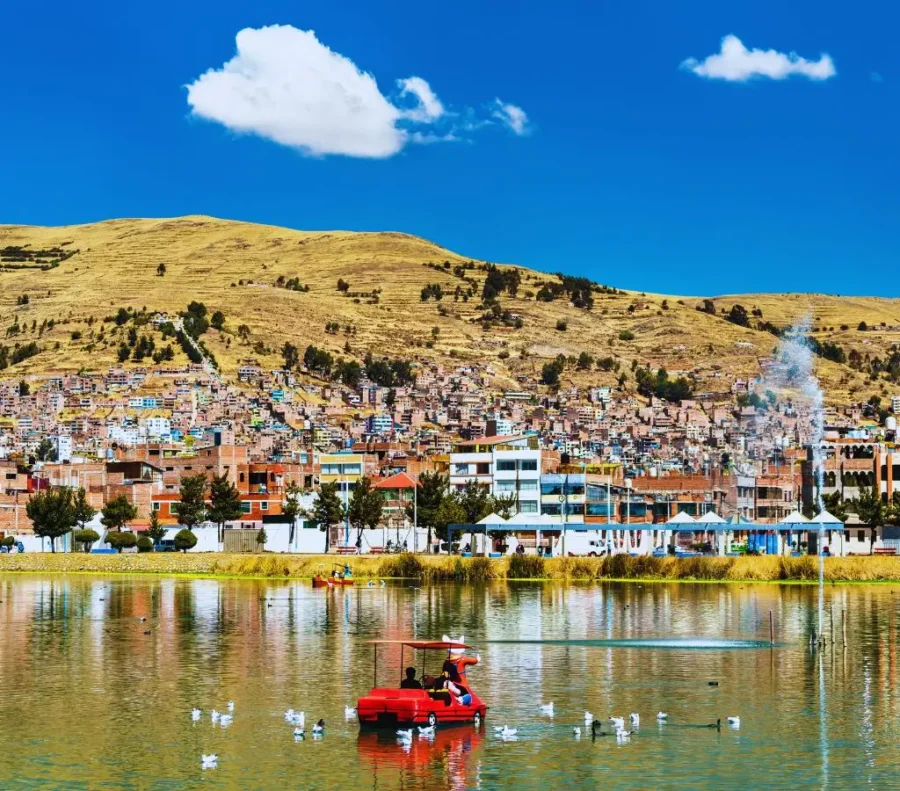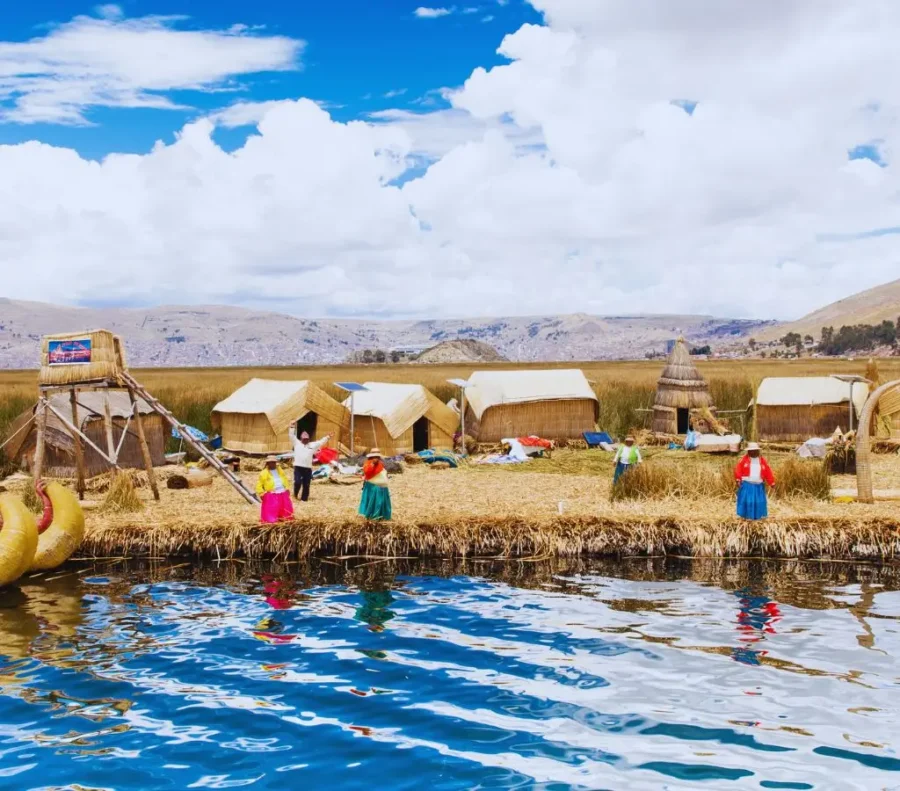
Titicaca is one of the most important destinations for the Inca civilization. To learn more, we will talk about the characteristics of Lake Titicaca where we will find a diversity of species (flora and fauna), the climate and the presence of islands found in the lake.
According to mythology, the children of the God Wiracocha emerged from its waters to populate the land and begin the culture we know today.
Table of Contents
It is located at an altitude of 3800 meters above sea level and its source is the Collao plateau; its waters are navigable and have an area of 8562 km², of which Peru represents 56% and Bolivia 44%. The maximum depth the lake reaches is 281 meters, with a volume of no more than 903 kilometers.
It is more than 190 kilometres long and 80 kilometres wide on average.
The climate of Lake Titicaca is not so cold, because during the day the Titicaca waters absorb the day's solar energy and at night the accumulated heat escapes and the extreme cold is not felt so much.
Titicaca's water is clear and pristine and was considered the freshwater lake. However, studies have revealed the following:
Alkalinity values were high (75 - 150 mg/l) and very high (> 150 mg/l), i.e. high carbonate and bicarbonate content. Total water hardness recorded: hard (121 - 180 mg/l) and very hard (> 180 mg/l).
And on the banks of the river, the water is polluted and inadequately treated.
Lake Titicaca has a variety of islands that are still inhabited by Aymara, Quechua and Uru descendants who maintain a historical relationship with the lake, but among them are some islands that have become tourist attractions in both Peru and Bolivia.
I will now explain the islands that populate Lake Titicaca:
Islands on the Peruvian side

Islands on the Bolivian side

Titicaca is called the Titicaca National Reserve because it preserves endangered flora and fauna. As it is home to hundreds of native species of fish, amphibians and birds, here are the species found there:

Lake Titicaca is very important because it protects about 37,000 hectares of sugar cane fields, is an area that protects fauna and flora, and is also considered a generator of tourism, drinking water supply, fishing, navigation and other recreational activities.
Titicaca has become one of the dream destinations that every traveler must visit:

Lake Titicaca is formed by several rivers that flow around it and terminate in the lake. Among their characteristics, the rivers are short and are not torrential, their regime is irregular, since it is not constant.
Their waters originate in the western and eastern ranges of the Andes, and finally these rivers are not navigable.
Lake Titicaca is relevant to the Peruvian territory for being the highest navigable lake in the world and serves as a tourist attraction that allows visitors to learn about its importance and origin through its legend.
At the same time you can appreciate the native species that inhabit the area and the inhabitants strengthen their customs and language.
Legend has it that in the beginning Lake Titicaca was a fertile valley in which the gods of the mountains "Apus" provided them with everything; however, they were forbidden to go to the top of the hill, since there was the sacred fire there, but since there is evil or called the devil, he was in charge of tempting men.
It was there that the "Apus" gods, seeing that their children had disobeyed, sent hundreds of pumas and devoured all the people living on the island. Seeing this scene, the Sun God (Inti) was saddened and wept uninterruptedly to the extent that the valley was flooded.
They were all washed away, but a woman and a man survived the flood, and when they looked outside, they found that everything was flooded and the cougars had turned into rocks.
Since then it is known as Lake Titicaca which means: Titi is a cat or puma and Kaka means stone, the two words form the current name.